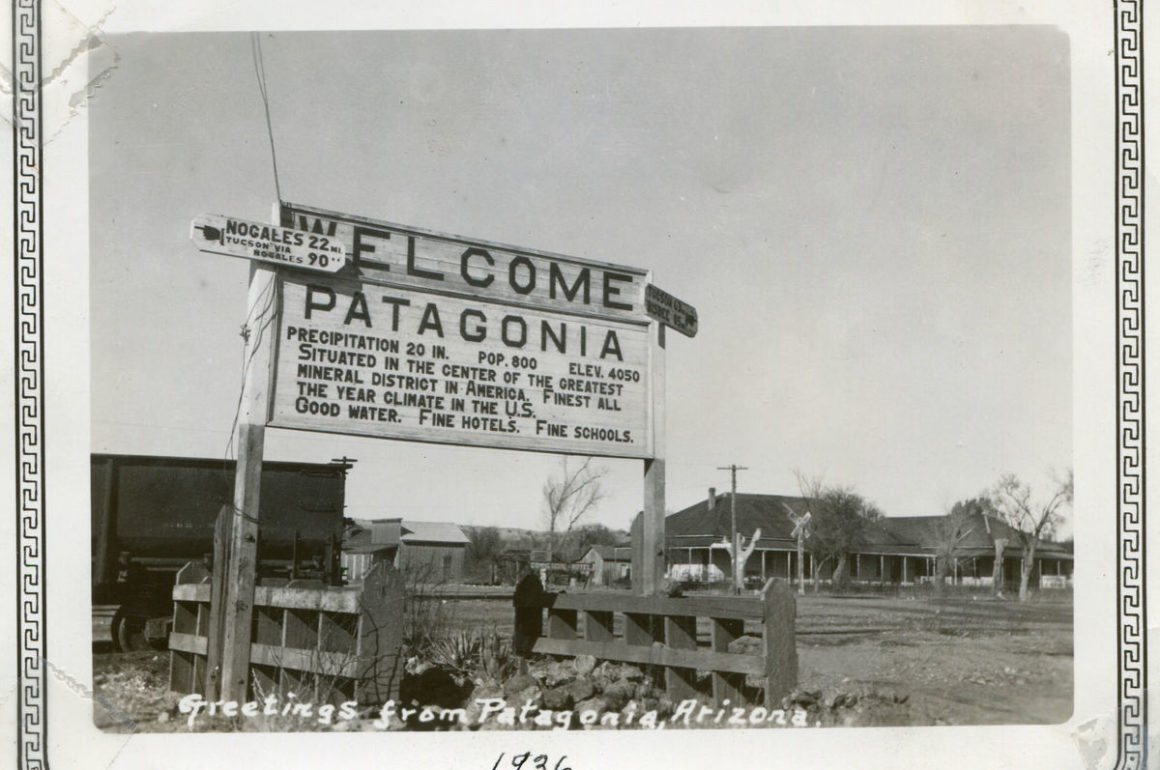What’s the source of Patagonia’s name: Miners’ nostalgia or grizzly prints?

The Weekly Bulletin – Arielle Ziontes –
Say the name Patagonia to most Americans and they might think of the sportswear brand or the sparsely populated, mountainous region at the southern end of South America it’s named for. But in and around Santa Cruz County, the name Patagonia represents the small town and the mountain range that overlooks it.
So how did the town and mountains get their name? Was it from some connection to the Patagonia of South America? According to Gilbert Quiroga, president of the Patagonia Museum, that’s one of two theories behind the origin of the name.
“Welsh miners that had come from Patagonia in South America came to this region also as miners,” he said. “And these mountains reminded them of those mountains in Patagonia, South America.”
The other theory also relates to the South American Patagonia.
John Delaney, historic maps curator at Princeton University Library, wrote in his multimedia work “Strait Through: Magellan to Cook & the Pacific” that the word Patagonia comes from the first Europeans to encounter the indigenous people of the region. Portuguese explorer Ferdinand Magellan and his expedition described the native Tehuelche people as giants with large feet. According to an online component of Delaney’s research: “The etymology of the word is unclear, but Patagonia came to mean ‘Land of the Bigfeet.’”
Quiroga said settlers may have named the Southern Arizona mountains Patagonia after seeing a big foot print, possibly belonging to the now extinct Mexican grizzly bear.
It is unclear when the Patatgonia Mountains were first named, but it would have been before 1860. That year, Sylvester Mowry took over the Patagonia mine and renamed it and the nearby settlement (now a ghost town) after his last name.
The present-day town of Patagonia was almost named Rollin after Rollin Rice Richardson, who Quiroga calls the “Father of Patagonia.” In 1896, Rollin hired J.C. Green, a surveyor from Tucson, to plot the settlement. In 1899, the town applied to open a post office and Rollin was poised to give the community his name until the idea met with local opposition.
“There was an outcry from the citizenry and they petitioned the post office to name the town Patagonia after the nearby mountains,” Quiroga said.
The U.S. Postal Office Department recognized the name of the town in 1900 but it wasn’t formally incorporated until 1948.
According to a map at the museum, before Mexicans and Europeans settled Patagonia, the town was a Tohono O’odham rancheria, or seasonal village, called Sonoitac. The rancheria was centered at the confluence of Sonoita and Harshaw Creek, the site of the present day Native Seeds/SEARCH Conservation Farm. According to Quiroga, Sonoitac means “where the corn grows” in O’odham.
Before they were called the Patagonia Mountains, Quiroga said, the mountains were called the Chihuahuillas. This fact is corroborated by a pamphlet published by the Coronado National Forest called “Who Named The Mountains.” A Tohono O’odham colleague of Quiroga told him that word is either from his culture or the Opata people.
Quiroga, whose family moved to Patagonia from Sonora in 1898, said he personally believes the town was named after settlers saw large paw prints. While he believes the tracks would have been grizzly bears, he said some Patagonia residents like to think they were from the legendary Sasquatch.
